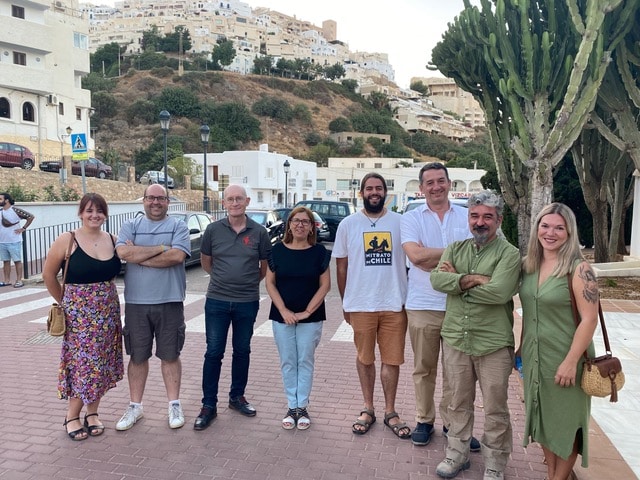The work project for the Mojácar la Vieja archaeological site dig for the 2022 campaign has been officially presented, the works starting on 5th September and remaining active until the end of this month.
The MEMOLAb Biocultural Archaeology Laboratory, belonging to the University of Granada, along with Mojácar Council, gave an interesting informal talk at the Multi-Uses Centre to numerous local residents, which included the conclusions from the discoveries made over the years at the Mojácar dig site.
Emmanuel Agüero, the local authority’s Tourism Councillor, opened the speeches with thanks to the Valparaíso Foundation, as well as to the property owners of areas where the site is located, who have allowed greater access to the land for both the University of Granada and Mojácar Council to carry out this work.
This support has made it possible for the Mojácar la Vieja site to today be part of the 2022-2025 General Investigation Plan, as well as making it easier to obtain more support from the State with regard to the 1.5% Cultural and other financial support, although Mojácar Council will continue to collaborate financially on this project, as well as the Patrimonio Inteligente (intelligent heritage) company.
Jorge Rouco Collazo, director of the Mojácar La Vieja General Investigation Project and MEMOLab member, has developed the planning of the Mojácar General Investigation Plan for these years. The group of investigators is made up of 18 investigators, the majority from MEMOLab, and another 13, external, who are professors and researchers from different universities and analysis centres, such as CSIC, both in Spain and the UK.
The general objective of the Mojácar la Vieja GIP is, essentially, to continue with the line of action of the three previous campaigns: to continue defining the sequence of occupation and the construction phases of the settlement; although it is now known what the phase of abandonment at the end of the 13th century to the 14th century was like, it has still not been possible to determine, at an archaeological level, its foundation in the 12th century.
As well as continuing to document the settlement itself, they also want to document what productive activities were carried out at that time and which provided their sustenance, both the handicraft activities and their relationship with the plain and food production labours.
They are equally as interested in establishing the relations between the rest of the archaeological sites in the immediate surroundings, whether cultural or commercial, which would be maintained, among other points and almost certainly, with the north of Africa, as shown by ceramic remnants.
Parallel to these actions, it is planned to propose a conservation and maintenance plan that, as soon as possible, allows local residents and visitors to visit the site.
The two new areas which are going to be worked on are situated outside the fortification, outside the walls, one of them close to the entrance gate, where it is known, from the remains that can be seen with the naked eye, that there are more structures, and to check whether it is as built on as the interior.
At the other chosen point, on the south-east slope, they hope to find areas of handicraft production, as well as of homes, to put together the life of the Mojácar la Vieja residents.
The 2022 campaign has the assistance of 35 volunteers, history and archaeology students from different Spanish universities, being open as always to all those who want to help for the time they can on this work or pay a visit to the site, outside of the two official guided tours which are planned for September.
The archaeological activity carried out parallel to the excavation works is to be highlighted, centering on the study of the plain and the irrigation system, making maps and carrying out research, which from the first moment have been done with the irrigators, and which are of great importance for an overall understanding of what Mojácar la Vieja meant.





